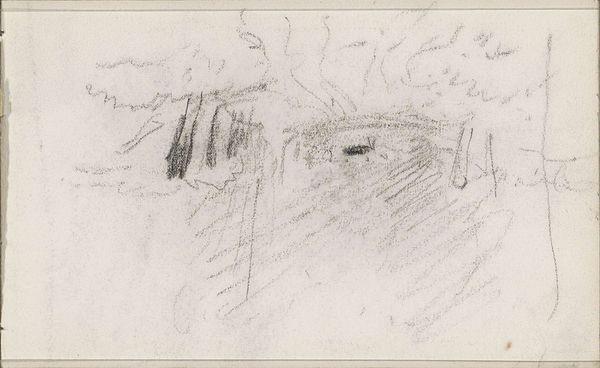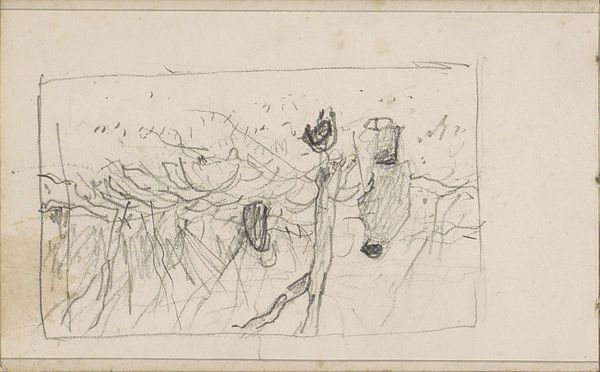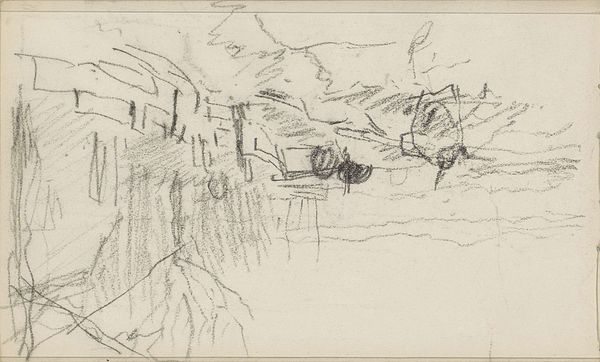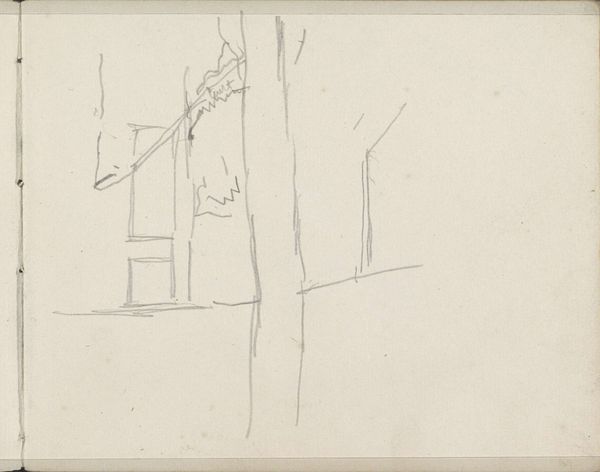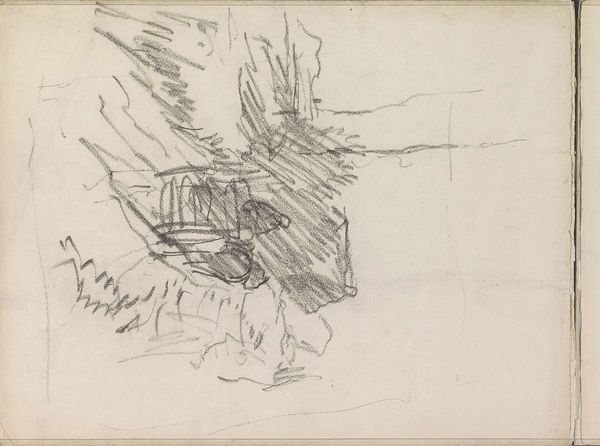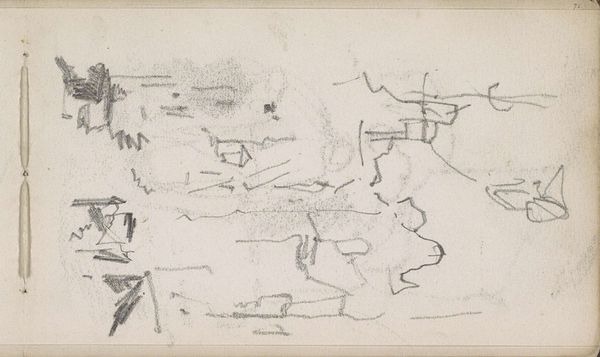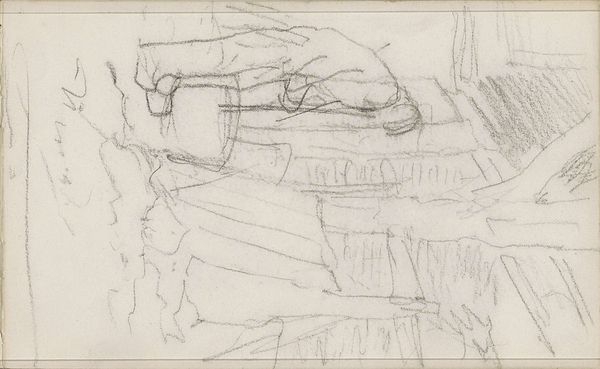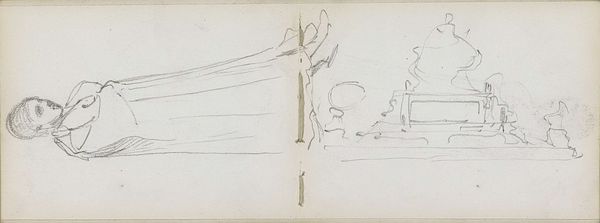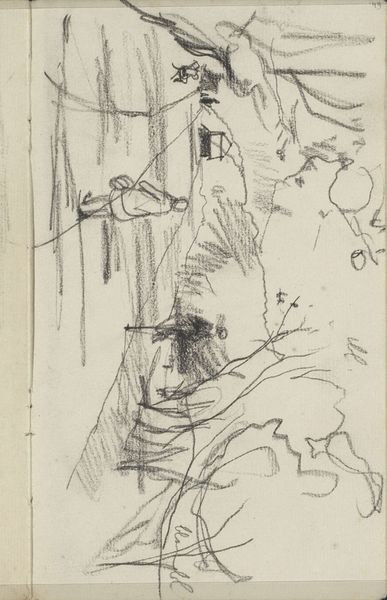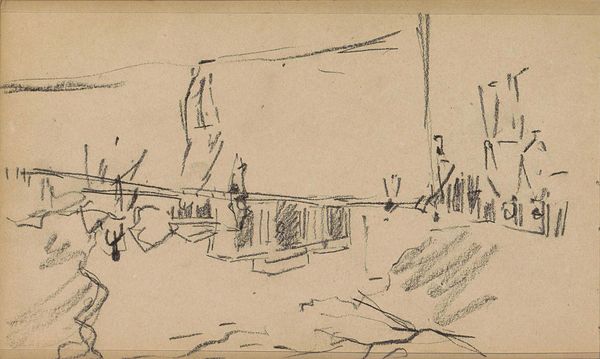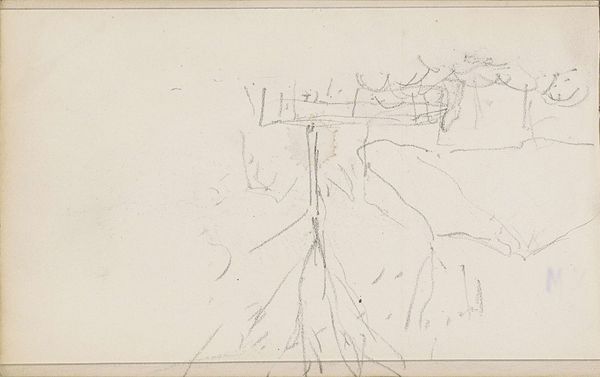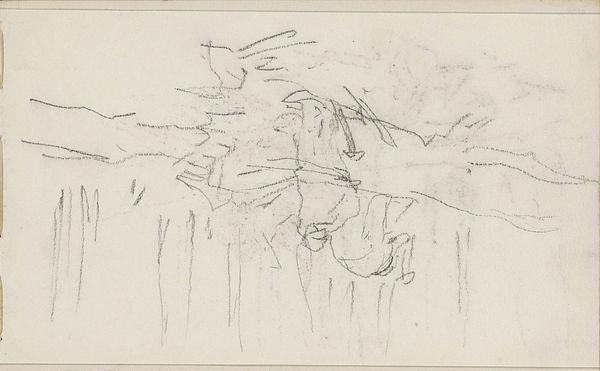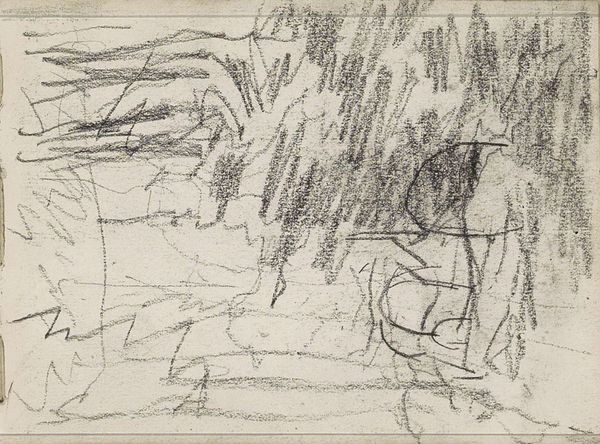
Copyright: Rijks Museum: Open Domain
Curator: Here we have "Figures by a Cart, Possibly in the Countryside" by George Hendrik Breitner, likely created sometime between 1886 and 1923. It’s a pencil drawing. Editor: There’s an undeniable rawness to it. It feels more like a fleeting impression jotted down on the go, with a real sense of labor sketched there. The quick strokes and open space…almost feels incomplete. Curator: Well, Breitner was very interested in capturing fleeting moments of urban life. Even though the title suggests a rural scene, these kinds of sketches were part of his larger artistic project of documenting daily life, often of working-class people. Editor: Right, the everyday and its material conditions...You can almost feel the weight of the cart, the texture of the landscape, despite how minimal the actual marks are. The use of pencil on paper gives it that immediate, accessible quality—this wasn’t some precious, commissioned work. It feels…direct. Curator: Precisely! Breitner challenged the conventions of what was considered worthy of artistic representation. He was part of a larger movement towards Realism and Impressionism, which pushed against academic art’s focus on idealized or historical scenes. His association with the Amsterdam Impressionism group gave a new avenue to drawing as part of a completed artistic oeuvre. Editor: That also ties back to labor doesn’t it? Pencil, paper—basic tools used for planning, note-taking...not traditionally ‘high art’ materials. Its function in creating studies like this speaks to the larger cycle of artistic production and value-creation in fine art versus the materials themselves. It reminds me of his involvement in the Dutch Etching Club in the 1880s too. Curator: Yes, the very act of sketching like this became a way of democratizing art, bringing it closer to the experiences of ordinary people. And indeed, those quick pencil strokes become almost like visual shorthand, capturing the essence of a scene. Editor: So, more than just a preparatory study, it's a testament to the value of recording the material existence of working lives. A statement in itself. Curator: I see it also as evidence of the importance of showing the common citizen and their role in the larger societal landscape, a move away from a privileged depiction of solely the wealthy and landed gentry. Editor: Ultimately, both an aesthetic and socio-political artifact then. A little glimpse into labor and making as a social endeavor through his drawings.
Comments
No comments
Be the first to comment and join the conversation on the ultimate creative platform.
